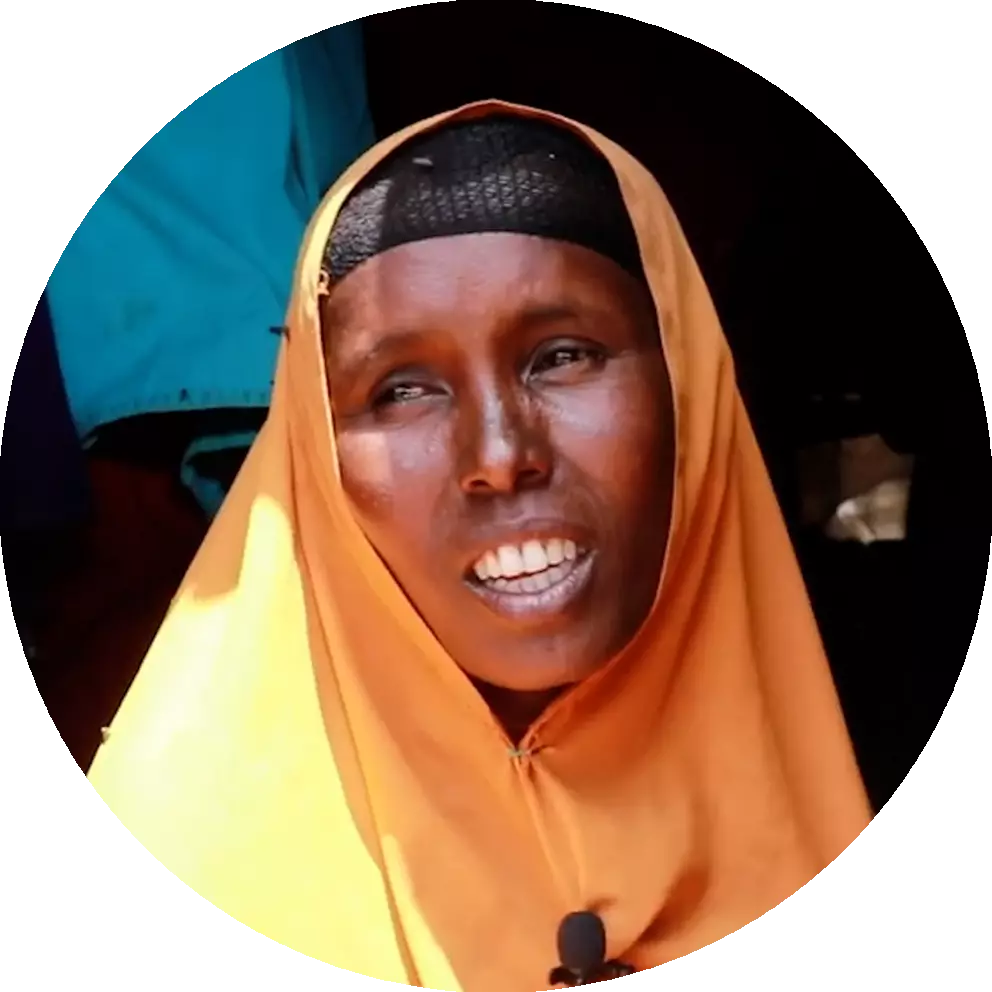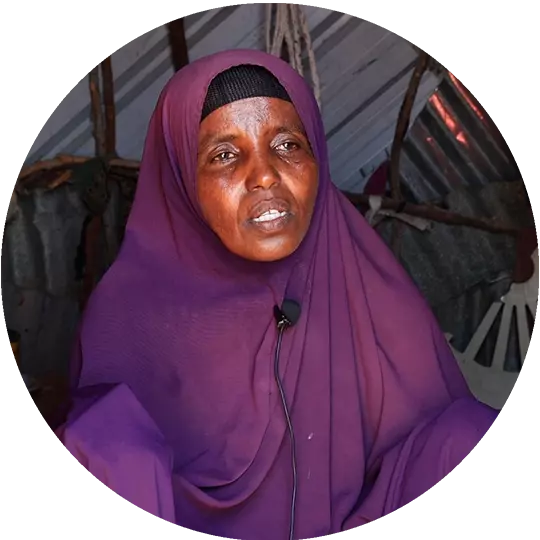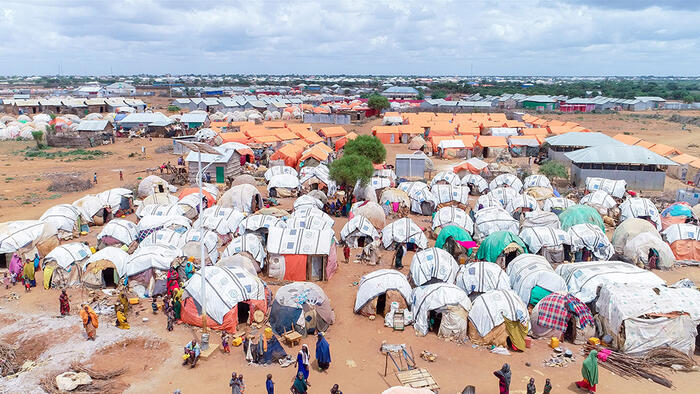‘You need to start thinking of these informal settlements as permanent settlements – mini-cities.’
War and drought is emptying Somalia’s countryside, creating a surge in urbanisation and cementing a permanent demographic shift that will have far-reaching implications for the country’s future recovery, say aid and development experts.
After three decades of conflict and humanitarian crisis, almost four million people – roughly a quarter of Somalia’s population – have been uprooted at least once from their homes. Most have settled in overcrowded informal settlements in the capital, Mogadishu, and a handful of major towns, where they face the bleakest of futures.
That uninterrupted flow of people looking for aid, safety, and work has given Somalia one of the fastest urbanisation rates in the world. There is little expectation that those who have lost everything, fleeing an unprecedented stretch of failed rains and a resilient jihadist insurgency, will ever return to their rural homes.
That poses a challenge for Somalia’s fragile government and funding-constrained aid sector, relief workers say. The rate of migration means Somalia’s crisis is now overwhelmingly an urban one. That requires a shift from traditional short-term emergency aid to more sustainable and development-minded long-term responses – so-called “durable solutions”.
“People are not going back,” said Abdullahi Halake, co-author of a new report on urban displacement by Refugees International. “You need to start thinking of these informal settlements as permanent settlements – mini-cities. They need services; it needs to be sustainable, and on an order of magnitude, because climate change will only get worse.”
That shift, however, is far from straightforward. Providing security of tenure for the displaced – who are settled mostly on privately owned land – is one obstacle. The difficulty the government faces in enforcing new laws that recognise their rights is another. And then there’s the inevitable struggle to secure costly multi-year financing from donors who consistently fail to meet Somalia’s annual humanitarian funding targets.
Despite the abundant reference to durable solutions in the strategy documents, this trifecta of problems means only a limited number of pilot projects have ever been tried. Absent a more robust commitment, millions of people remain in the dead-end misery of Mogadishu’s informal settlements – a new, desperate class of uber poor.
‘We went from farms and crops to this’
Last year, The New Humanitarian interviewed three women who had just fled drought-hit south and central Somalia. They had survived gruelling journeys, with little food and water, and had settled with their children in al-Hidaya, an informal settlement along the Afgooye road on the outskirts of Mogadishu.
They were among the 1.3 million people displaced last year after six seasons of failed rains that scorched farms and decimated livestock herds. Desperately looking for help, they counted themselves lucky they had made it to al-Hidaya, which at the time sheltered more than 1,700 families.
Nine months on, to try and better understand the experience of Somalia’s internally displaced persons (IDPs), The New Humanitarian met with the same women again to explore what had changed in their lives.
Their responses were uniformly dire. They lamented the lack of aid agency interest in al-Hidaya, the struggle to keep their hungry children fed and alive, and the lack of any opportunity to improve their circumstances.
“Compared to the first time that you guys came, my situation hasn’t changed at all, my child and I are barely surviving,” said Amina Mohamed, a young mother of a five-year-old son.
“There’s no future in this IDP camp. We went from farms and crops to this,” Mohamed added, the sweep of her hand taking in an expanse of small bivouacs covered in scrounged plastic sheeting and odd bits of cloth.
Yet the drought she had suffered in her farming community of Kunta Warey, in Lower Shabelle, was far worse. “I fled because everything we had, we lost. All the crops died, there’s nothing left,” she told The New Humanitarian. As a result, she will cling on as best she can in al-Hadaya.
To get by, the displaced here – mostly women and children – rely on the support of well-wishers in the local community, and whatever jobs they can find. That typically involves working as domestic cleaners, or portering in Bakara market, a 30-minute bus ride away.
“On an average day, I make anywhere from $1 to $1.25 in Bakara and come back with the last bus at sundown,” said Amina Ali, a widower with two children to support. “Most of the money ends up spent on bus fares; what’s left, I buy anjero [a pancake-like staple] to feed my family.”
Clans and gatekeepers
There are two broad categories of informal settlements in Mogadishu: those set up in abandoned government buildings or on private land in the city centre – which tend to be older – and the rudimentary and overcrowded displacement camps on the outskirts.
The distinction has a bearing on people’s security of tenure. Forced evictions and secondary displacement have historically been an additional burden confronting displaced people trying to restart their lives. The greatest risk is faced by newly arrived IDPs, who are mostly from minority clans, which weakens their rights and protection in a Hawiye-dominated city.
Settlements on the outskirts of the city are leased out to the displaced by private landowners working with camp managers – so-called “gatekeepers” – typically for a three to five year stretch. Rents range from $15 to $20 a month.
Although land and rents are cheaper here, it also means displaced people are further from the work opportunities in the city. Security is also more tenuous, and privately provided services – from water to electricity – are less likely to be available.
Gatekeepers oversee IDP registration and the distribution of aid agency rations, taking a cut as a kind of service fee. Relief workers rarely visit camps along the Afgooye road (or even in central Mogadishu) as a result of the security risks, leaving gatekeepers as an entrenched – though locally accepted – rent-seeking component of the humanitarian system.
And it’s not all exploitative. The gatekeepers work with IDP management committees to ensure the fair distribution of what rations can be sourced, and to raise money to upgrade the camps when they can. In the case of al-Hidaya, that has included a Quranic school for the children.
“Blessings to the lady [the gatekeeper],” Hakimo Gabow, originally from Lower Shabelle, told The New Humanitarian. “The cards she receives from the agencies [providing allocations of rice and sugar] are distributed in fives to each family. If the cards are not enough for everyone, then we share.”

Hakimo Gabow
Kunta Warey, Lower Shabelle
“We were well-off during my childhood. We had crops, and the nearby river flowed with water. We used to load our surplus onto trucks and sell throughout the region. But today, the whole area has been decimated by the drought.
“At sunrise, I usually take the bus to Tablelaha [on the road to Lower Shabelle] to look around for people who need clothes to be washed. I don’t have any specific customers. I just knock on doors and wash clothes for people who need them.
“I also work at Bakara market, where I carry bags of groceries or items for people. The most I’ll make at the market is $2. I’m then caught by the hard decision of what I should buy for my kids to eat. Should it be rice, or cooking oil? Both are expensive. Two kilos of rice costs $2. We’d like to add tomatoes, but we can’t afford them, so I’m usually forced to feed my children just dry rice.”
But this is just barely surviving – and it is made all the harder by the steady flow of people from the countryside, pushing up food prices and sharpening the competition for limited labour opportunities.
In Mogadishu, IDPs are considered the poorest strata of society.
They arrive from the countryside with agrarian skills, which don’t translate to the “economic and social reality of the city”, said Halake from Refugees International. To become more self-reliant they will need development programmes and livelihood training, he added.
To stay or go
The politics of land ownership and tenure security in Mogadishu complicates any long-term development plans to turn IDP camps into permanent settlements, with sanitation services, water, and schools.
“Durable solutions require, first, a safe place for people to stay, and to stay for a long time,” said Erik Bryld, managing director of Tana, a global development consultancy that has done extensive work on urbanisation in Somalia. “Then comes the income opportunities and the schools.”
“You need to be prepared to renegotiate in each district with the clan, the militia, businessmen – one size doesn’t fit all.”
A complex network of formal and informal power holders in Mogadishu needs to be consulted when it comes to potentially lucrative development projects. Clan elders are especially important, but the constellation also includes municipal officials, business people, and landowners.
“It’s difficult to expand at scale as the political economy differs from area to area,” explained Bryld. “You need to be prepared to renegotiate in each district with the clan, the militia, businessmen – one size doesn’t fit all.”
Care also needs to be taken in developing the land. “The solution is not to pump a lot of money into building permanent structures, as that increases the value, and with that the threat of evictions,” Bryld added.
Despite the challenges, incremental progress is being made. The Benadir Regional Administration (BRA) – which covers Mogadishu – has been able to slowly strengthen its authority within the mix of informal power brokers.
Rental agreements between IDP settlements and landowners – previously verbal – are now written and lodged with the BRA, and there has been a reduction in forced evictions, according to Bryld.
However, Daud Jiran, Somalia director for Mercy Corps, is sceptical that these durable solutions can work in Mogadishu at any significant scale. “I seriously doubt the government will be able to secure enough land to establish these people,” he told The New Humanitarian. “Where’s the money, where’s the processes, where are the systems?”
Instead, he sees a return policy for IDPs as a more practical alternative to permanent settlements in Mogadishu, where historically there have been political concerns over how rural-urban migration might alter the all-important clan balance of the city.
“The riverine areas of southern Somalia are where you can do basic subsistence farming, you can develop skills, and [returning] IDPs can become part of a productive agricultural system,” Jiran noted.
However, the insurgent group al-Shabab, which is in charge of much of the countryside, limits the reach and authority of the federal and regional governments. “The key problem is the issue of insecurity,” Jiran acknowledged. “Where security is established [as part of current military operations], there will be more options, and some people will go back.”
But for the bulk of displaced people in Mogadishu, especially former pastoralists who have lost their animals – upending their way of life – the city is where they are trying to make their new homes.
Amina Osman, one of the three women The New Humanitarian has followed, still has a few relatives in the Shabelle region. “I want them to join us here so we can relieve them from their suffering,” she said. “We will share with them whatever food we get.”

Amina Osman
Sablale, Lower Shabelle
“The day I made the decision to leave my town, I remember that all the leaves from the trees had dried. The grass had turned dry. It was like walking on sticks or twigs.
“Before this drought, most of the people in the Sablale area were farmers who made a living from their crops. But there’s no farmers there now, everyone has fled.
“I go to Bakara market to look for work. In Bakara, I make money carrying bags and items for people. Much of the money [I make] ends up being spent on the bus fare, but I strive to put something in my two children’s mouths each day.”
Halake sees policy action as evolving gradually. The government needs to implement existing laws to protect displaced people, and the aid sector needs to shift its approach to IDPs to better reflect the realities of a protracted urban crisis, he added.
“We all complain about the treadmill of the short-term funding cycle of humanitarian aid, but we should take it slowly,” he told The New Humanitarian. “Durable solutions involve a ton of money, and no real guarantees of success.”
The New Humanitarian


